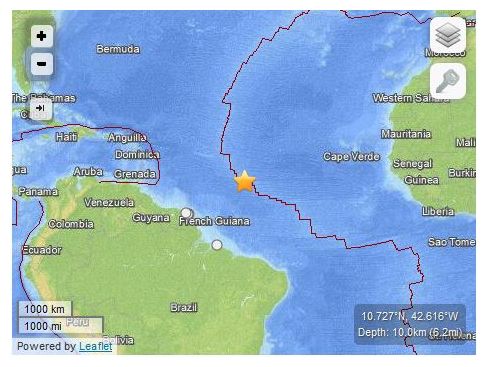
© USGS
2013-06-24 22:04:13 UTC
2013-06-24 19:04:13 UTC-03:00 at epicenter
Location
10.726°N 42.616°W depth=10.0km (6.2mi)
Nearby Cities
1242km (772mi) ENE of Remire-Montjoly, French Guiana
1248km (775mi) ENE of Cayenne, French Guiana
1252km (778mi) ENE of Matoury, French Guiana
1265km (786mi) ENE of Kourou, French Guiana
1359km (844mi) NNE of Salinopolis, Brazil
Technical Details
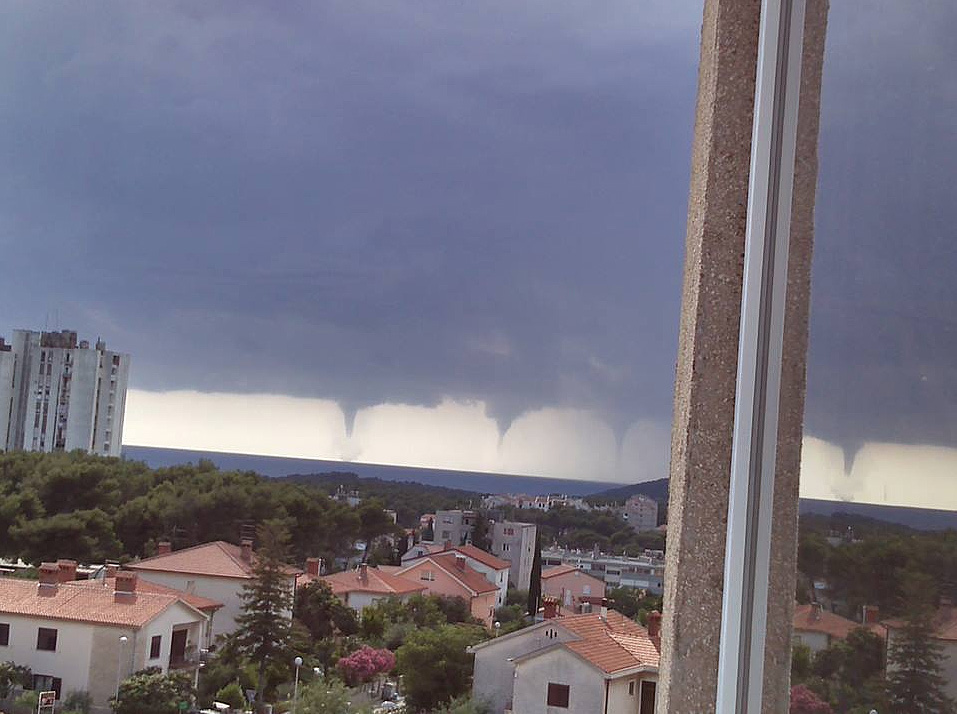
Four waterspots form off Italy's Adriatic coast today, June 24th 2013
A violent tornado, as we can see in the photo, made landfall in the early afternoon (just after 3pm) near Termoli on Italy's Adriatic coast, where a storm that had formed inland in the Molise region moved towards the city. The Air Force's own weather station in Termoli measured winds up to 148km/h (92mph). For about 15 minutes violent rain fell along with heavy hail storms. Homes, shops and the train station of Termoli were flooded. The tornado, which lasted about ten minutes, uprooted trees, ripped roofs off houses and downed billboards. Many sea-side resort buildings experienced serious damage as the tornado swept through the area. Firefighters, police patrols, municipal police and traffic police were all called to the area.
Exactly as expected in recent days, the Riviera of Romagna and Marche in Italy are the areas most affected by the weather this afternoon: a real "water bomb" is affecting the area on the border between Marche and Emilia Romagna. In Riccione 81mm of rain has already fallen, with 73mm in Rimini and 33mm in Ancona. There are reports of flooding and blackouts, with traffic mayhem. Check out the images below that depict this rather apocalyptic scene. Up to 12cms of rain
fell in one hour in some areas.
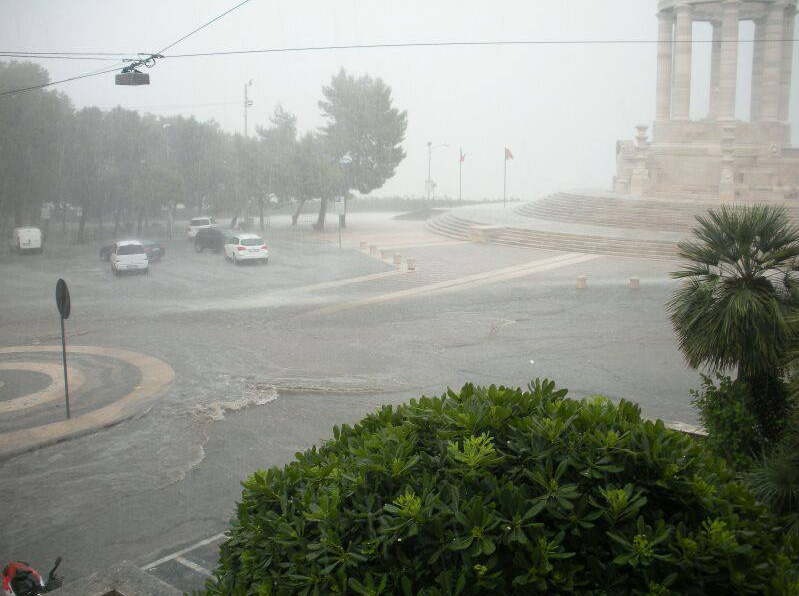
Heavy rainfall has caused flooding in the Emilia-Romagna and Marche areas of Eastern Italy. Streets have been turned into rivers and highways have been closed
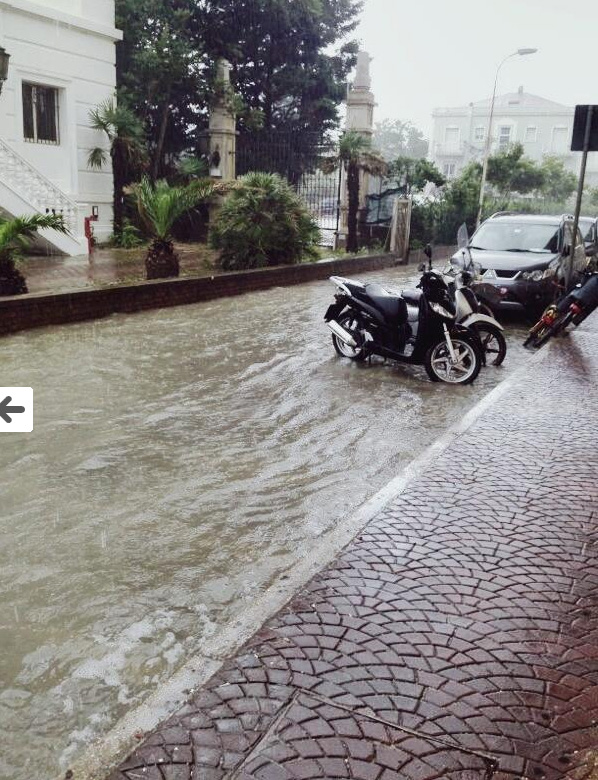
Floods in Rimini and Ancona on the Italian East coast have inundated towns and cities
Elmwood - Local beekeepers are finding millions of their bees dead just after corn was planted here in the last few weeks. Dave Schuit, who has a honey operation in Elmwood, lost 600 hives, a total of 37 million bees.
"Once the corn started to get planted our bees died by the millions," Schuit said. He and many others, including the European Union, are pointing the finger at a class of insecticides known as neonicotinoids, manufactured by Bayer CropScience Inc. used in planting corn and some other crops. The European Union just recently voted to ban these insecticides for two years, beginning December 1, 2013, to be able to study how it relates to the large bee kill they are experiencing there also.
Local grower Nathan Carey from the Neustadt, and National Farmers Union Local 344 member, says he noticed this spring the lack of bees and bumblebees on his farm. He believes that there is a strong connection between the insecticide use and the death of pollinators.
"I feel like we all have something at stake with this issue," he said. He is organizing a public workshop and panel discussion about this problem at his farm June 22 at 10 a.m. He hopes that all interested parties can get together and talk about the reason bees, the prime pollinators of so any different plant species, are dying.
At the farm of Gary Kenny, south west of Hanover, eight of the 10 hives he kept for a beekeeper out of Kincardine, died this spring just after corn was planted in neighbouring fields.
What seems to be deadly to bees is that the neonicotinoid pesticides are coating corn seed and with the use of new air seeders, are blowing the pesticide dust into the air when planted. The death of millions of pollinators was looked at by American Purdue University. They found that, "Bees exhibited neurotoxic symptoms, analysis of dead bees revealed traces of thiamethoxam/clothianidin in each case. Seed treatments of field crops (primarily corn) are the only major source of these compounds.
Local investigations near Guelph, led to the same conclusion. A Pest Management Regulatory Agency investigation confirmed that corn seeds treated with clothianidin or thiamethoxam "contributed to the majority of the bee mortalities" last spring.
"The air seeders are the problem," said Ontario Federation of Agriculture director Paul Wettlaufer, who farms near Neustadt. This was after this reporter called John Gillespie, OFA Bruce County president, who told me to call Wettlaufer. Unfortunately, Wettlaufer said it was, "not a local OFA issue," and that it was an issue for the Grain Farmers of Ontario and representative, Hennry Vanakum should be notified. Vanakum could not be rached for comment.
Yet Guelph University entomologist Peter Kevan, disagreed with the EU ban.
"There's very little evidence to say that neonicotinoids, in a very general sense, in a broad scale sense, have been a major component in the demise of honeybees or any other pollinators, anywhere in the world," said Kevan.
But research is showing that honeybee disorders and high colony losses have become a global phenomena. An international team of scientists led by Holland's Utrecht University concluded that, "Large scale prophylaxic use in agriculture, their high persistence in soil and water, and their uptake by plants and translocation to flowers, neonicotinoids put pollinator services at risk." This research and others resulted in the Eurpean Union ban.
The United Church is also concerned about the death of so many pollinators and has prepared a "Take Action" paper it's sending out to all its members. The church is basing its action on local research. The Take Action paper states among other things, "Scientific information gathered suggests that the planting of corn seeds treated with neonicotinoids contributed to the majority of the bee mortalities that occurred in corn growing regions of Ontario and Quebec in Spring 2012."
Meanwhile Schuit is replacing his queen bees every few months now instead of years, as they are dying so frequently. "OMAFRA tells me to have faith. Well, I think it's criminal what is happening, and it's hard to have faith if it doesn't look like they are going to do anything anyway," Schuit says.
Indian officials estimate deaths at around 1000 as they try to reach thousands of pilgrims still stranded.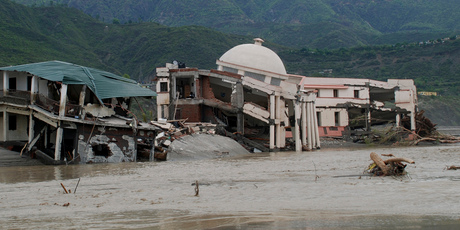
© APA damaged government guest house falls into the flooded water of the River Ganges in Shrinagar district, in the northern Indian state of Uttarakhand, India.
Soldiers in the north of India were battling against time to reach thousands of stranded pilgrims and tourists before the onset of further rains and landslides.
As officials said the death toll from the "Himalayan tsunami" could be as high as 1000, troops and emergency workers were still trying to reach 50,000 people who remain stranded in the state of Uttarakhand.
It emerged that soldiers had spotted around 1000 pilgrims close to the famous Kedarnath shrine; they have been taking shelter in ravines since the monsoon rains last week. India's home minister Sushilkumar Shinde visited Uttarakhand yesterday.
With warnings from meteorologists that more rains were on their way, he set a three-day deadline to complete the rescue efforts. The authorities appear to be struggling to deliver hard data: reports say that the 10,000 soldiers have so far rescued anywhere between 35,000 and 70,000 people.
But there have been reports in the Indian media that thousands of people remain unaccounted for.Officials said the death toll had reached at least 600 as Uttarakhand's Chief Minister, Vijay Bahuguna, said 560 bodies were buried deep in mud caused by the landslides. At the same time, it was reported that another 40 corpses were found floating in the Ganges, close to the holy town of Haridwar.
But officials fear the final death toll could leap as rescuers reach more and more pilgrim sites that have been inaccessible for a week. "The death toll could be more than 750 - maybe around 1000," Bahuguna said.
"Looks like manmade global warming is terrifying in New Zealand," says reader Joshua Cooley.
small payday loans
"Wasn't it supposed to be, later winters, earlier springs, less snow, no snow, higher snow levels, kids won't know snow, etc., etc.?"
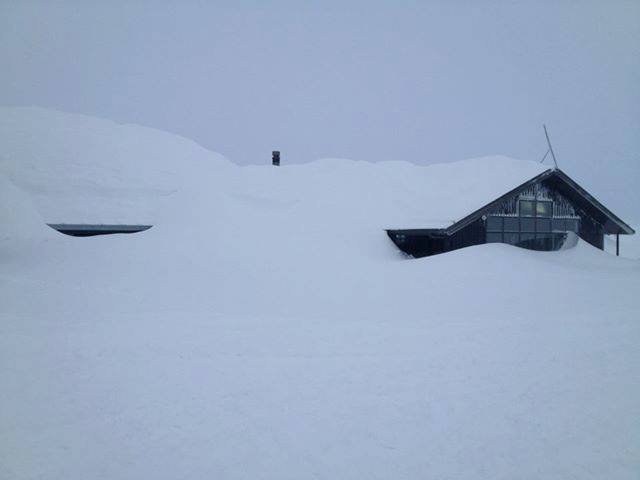
Mt Hutt, New Zealand -21Jun13
New Zealand just got hammered with snow (
See It's Dumping Down Under!)
At Mt Hutt the storm dropped 40 inches of snow in 20 hours! This led to 15 foot snow drifts and extremely high avalanche danger.
And the snow keeps falling! Another 40 cm is forecast over the next 24 hours.
According to the
Mt Hutt website, the ski area "is closed again today as further heavy snow falls and low visibility have hampered the progress of snow clearing on the access road. We estimate at least 1.6m of snow has fallen since the storm began and drifts exceeding 3m deep are commonplace in many areas.... All lifts are currently heavily caked in ice."
http://unofficialnetworks.com/avalanche-slams-mt-hutts-snowmaking-building-40-snow-20-hours-123369/Thanks to Joshua Cooley for this link
What melting snow can do.
Remember our article
First time ever skiing in the Pyrenees in June - 'It's just like the middle of January'?Here's what happens when snow starts melting:
Thaw causing historic flooding in Lleida - Spain
KabarWed, 19 Jun 2013 15:59 UTC
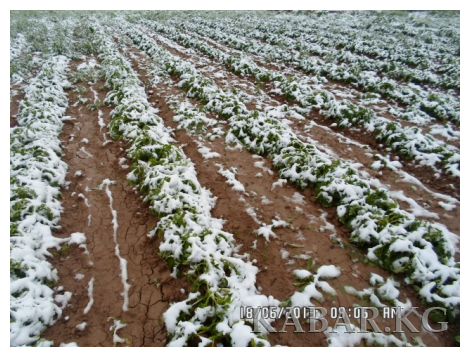
© Kabar
Bishkek - The snowfall in Naryn oblast on Monday reached in some places 40-50 centimeters. In some areas 3,5 and 15-50 centimeters. The press service of the authorized representative of the Government of the Kyrgyz Republic in Naryn oblast reports.
According to preliminary information, because of the snow 438 sheep and one mare with foal perished.
Besides, water level of rivers and canals rose because of snow.
Update - As a result of heavy snowfall on June 17-18 in northern Kyrgyzstan 1 thousand 866 sheep, 55 cows and 31 horses died in Naryn and Issyk-Kul oblasts. The press service of the Ministry of Emergency Situations of Kyrgyzstan reports.
The snowfall in Naryn oblast on Monday reached in some places 40-50 centimeters. In some areas 3,5 and 15-50 centimeters.
The commission of Civil Protection of regions continues to ascertain the damage of livestock farming and farmland.
Sott Editors
Sott.netSun, 23 Jun 2013 18:00 UTC
It's midsummer in the northern hemisphere, where record rainfall and the coldest spring in living memory have European meteorologists forecasting 'a year without summer' for most of Western Europe. While climatologists got their long-term forecasts for global warming all wrong, do these environmental extremes nevertheless signal 'climate change', just not in the way the authorities have portrayed it?
Extreme weather events are happening globally. One direct result of this is widespread crop failure. This leads to food shortages, followed by increased inflation as billions of people find themselves priced out of being able to eat. Riots and revolution are never far behind. In fact, complex systems theorists calculate that we're less than one year away from a fireball of global unrest. And that's not all...
The geological record shows that the default climate for this planet is a very cold one. Ice Ages last up to 100,000 years and are separated by 'inter-glacials', narrow windows of relative warmth that last, on average, 11,500 years. Our civilization is currently situated on the tail-end of the Holocene inter-glacial, meaning that it's just a matter of time before the next Ice Age.
How much time? Nobody knows. But in this week's show we're also going to examine the evidence for a synchronistic relationship between climate stress and the rise and fall of human civilizations within a more recent historical timeframe. Is it possible that humanity does play a role in modulating 'climate change', but perhaps not in the way environmentalists are suggesting?
Running Time: 02:19:00
Download: MP3

